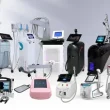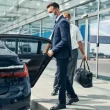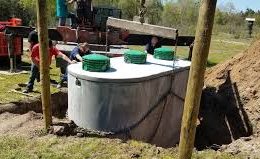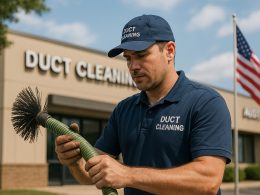Introduction
Slips, trips, and falls are among the most common causes of workplace injuries around the world. Whether you work in an office, construction site, or factory, these seemingly minor incidents can result in serious harm from sprained ankles to long-term disabilities. Understanding these hazards is not just about safety; it’s about creating a culture of awareness and responsibility.
If you’re someone looking to strengthen your knowledge of workplace safety or pursue an IOSH certificate course, understanding how to prevent slips, trips, and falls is a crucial first step.
Why Slips, Trips, and Falls Matter in Workplace Safety
Every year, thousands of workers suffer injuries due to preventable slips, trips, and falls. These incidents can lead to lost workdays, compensation claims, and even permanent disabilities. In industries like construction and manufacturing, such hazards are especially common due to uneven surfaces, cluttered workspaces, or poor lighting.
The IOSH Managing Safely professional course teaches that even simple hazards can have major impacts when ignored. Safety officers and managers are trained to identify these risks early and create effective prevention strategies that protect workers and improve overall productivity.
Common Causes of Slips, Trips, and Falls
Recognizing the causes is the first step in prevention. Below are some of the most frequent culprits behind workplace incidents:
1. Wet or Slippery Floors
Spills, leaks, or recently mopped surfaces can cause workers to lose their balance. This is especially common in kitchens, hospitals, and industrial environments.
Prevention Tip: Use proper signage, non-slip mats, and ensure immediate clean-up of any spills.
2. Uneven or Damaged Flooring
Cracked tiles, loose carpets, or uneven walkways increase the risk of tripping accidents.
Prevention Tip: Conduct regular inspections and repair or replace damaged flooring promptly.
3. Poor Lighting
Dimly lit areas can make it hard to spot obstacles or changes in floor levels.
Prevention Tip: Improve visibility with proper lighting, especially near stairways, corridors, and loading docks.
4. Cluttered Workspaces
Boxes, cords, or misplaced tools are common tripping hazards.
Prevention Tip: Keep pathways clear, and implement regular housekeeping schedules.
5. Inappropriate Footwear
Shoes with poor grip or unsuitable soles can easily cause slips.
Prevention Tip: Encourage employees to wear safety shoes designed for their specific work environment.
The Human Factor: Behavior and Awareness
Even with the best safety systems in place, human error remains a major contributor to accidents. Rushing, multitasking, or ignoring warning signs often leads to preventable injuries.
Through an IOSH certificate course, professionals learn how to foster awareness and accountability across all levels of an organization. For example, workers can be trained to report hazards immediately instead of stepping around them or assuming someone else will handle them.
How to Prevent Slips, Trips, and Falls in the Workplace
Creating a safe workplace isn’t complicated, but it requires consistency and commitment. Here’s a practical step-by-step guide that safety professionals often recommend:
Step 1: Conduct Regular Risk Assessments
Inspect floors, stairways, and corridors to identify potential hazards. Record findings and create a corrective action plan.
Step 2: Improve Housekeeping Practices
A tidy workspace is a safe workspace. Ensure materials are stored properly and walkways remain clear at all times.
Step 3: Use Non-Slip Materials
Install anti-slip mats or coatings in high-risk areas such as kitchens, restrooms, and entryways.
Step 4: Ensure Proper Footwear Policies
Develop footwear standards that match specific job roles. For example, warehouse workers may require anti-slip boots, while office workers may not.
Step 5: Implement Clear Signage
Place warning signs where hazards exist — wet floors, uneven steps, or temporary repairs.
Step 6: Train Employees Regularly
Training is key to maintaining awareness. The IOSH Managing Safely professional course emphasizes the importance of ongoing education to ensure workers remain proactive about safety.
Step 7: Encourage Incident Reporting
Establish a simple reporting system for employees to highlight unsafe conditions without fear of blame.
Real-World Example: When Prevention Works
A leading manufacturing plant in Pakistan once faced repeated slip incidents due to oil leaks near machinery. After management enrolled their supervisors in an IOSH certificate course, they implemented preventive measures — non-slip mats, improved drainage, and regular inspection routines. Within three months, incidents reduced by 80%, improving both morale and productivity.
This example proves that small, consistent actions can have powerful results.
Why Training Matters: Building a Culture of Safety
Workplace safety is not a one-time effort. It’s a continuous process that requires proper training and awareness. Enrolling in an IOSH online course can equip you with essential knowledge to recognize hazards, assess risks, and develop effective control measures.
If you’re looking to advance your safety career or help your organization stay compliant with global standards, click here to learn more about how IOSH certification can make a difference.
Conclusion
Slips, trips, and falls may seem minor, but their impact on workplace safety is anything but small. From bruises to fractures, these incidents can cause significant harm, financial losses, and downtime. By fostering awareness, improving workplace design, and investing in quality training like the IOSH certificate course, organizations can create safer environments for everyone.
If you’re ready to take your safety knowledge to the next level or help your organization meet global standards, click here to explore the best IOSH training options and start your journey toward a safer, smarter workplace.
FAQs About Slips, Trips, and Falls
Q1. What industries are most affected by slips, trips, and falls?
These incidents are common across all sectors, but especially in construction, manufacturing, hospitality, and healthcare.
Q2. Can safety training reduce slip and fall accidents?
Absolutely. Courses like IOSH Managing Safely focus on proactive hazard identification and behavioral safety, helping reduce workplace accidents significantly.
Q3. How often should risk assessments be conducted?
Experts recommend quarterly assessments, or more frequently in high-risk environments where hazards change regularly.
Q4. What’s the biggest mistake employers make?
Ignoring minor hazards or assuming employees will report them. Consistent inspections and communication are key.












